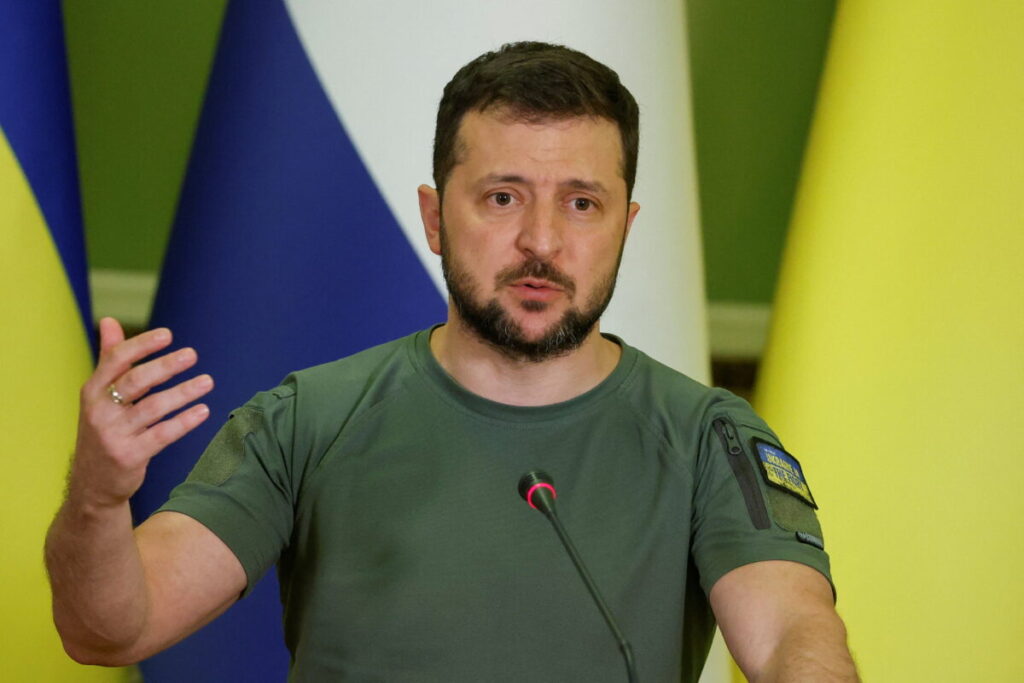Ukraine Faces $1 Billion Gas Shortfall for Winter Storage Amid Russian Attacks

Ukraine’s President Volodymyr Zelenskiy attends a joint news briefing with Dutch Prime Minister Mark Rutte (not seen), as Russia’s attack on Ukraine continues, in Kyiv, Ukraine July 11, 2022. REUTERS/Valentyn Ogirenko
As winter approaches, Ukraine is facing a daunting challenge: securing $1 billion worth of natural gas to meet its storage targets for the upcoming season. The country, already grappling with the devastating impacts of Russia’s ongoing invasion, now faces an energy crisis exacerbated by continuous Russian attacks on its energy infrastructure. With temperatures dropping, ensuring sufficient gas reserves for heating and other essential needs has become a critical priority for the Ukrainian government.
The Energy Crisis: Russian Attacks on Infrastructure

Since the start of the war in February 2022, Russian forces have targeted Ukraine’s energy infrastructure, causing widespread damage to gas pipelines, power plants, and electricity grids. These attacks have significantly disrupted the country’s energy supply and put a strain on its ability to store gas in preparation for the colder months.
As a result of these damages, Ukraine’s gas storage facilities are not as full as they would typically be at this time of year. In normal circumstances, the country would rely on its own gas production and imports to fill storage facilities, but the ongoing conflict has disrupted both these sources.
Ukraine needs to have approximately 19 billion cubic meters of gas in storage by the start of the winter season to ensure that homes, hospitals, and critical infrastructure can be properly heated. But with much of its domestic production capacity severely reduced, the Ukrainian government is now looking to buy additional gas from abroad to meet its target.
Trump’s Shocking $100,000 H-1B Visa Fee Proposal Sparks Global Debate
The $1 Billion Price Tag
To achieve its winter storage target, Ukraine must secure about 5 billion cubic meters of gas — a substantial quantity that comes with a hefty price tag. At current market prices, this additional gas would cost around $1 billion, a figure that underscores the financial strain Ukraine is under as it fights a war on multiple fronts.
The challenge is not just financial but logistical. The war has made it more difficult to arrange the necessary infrastructure for gas imports, as pipelines and transportation networks remain vulnerable to Russian strikes. This adds another layer of complexity to an already fraught situation.
Ukraine’s government is exploring multiple avenues to secure the gas it needs, including seeking emergency supplies from European countries, tapping into international energy markets, and requesting financial assistance from international partners, including the European Union and the United States.
International Support and the Role of Europe
The European Union, which has been a steadfast ally of Ukraine throughout the war, has recognized the urgency of the situation. Several EU nations, including Poland and Slovakia, have expressed willingness to assist Ukraine in securing gas supplies, either through direct imports or by offering technical and logistical support.

The EU has also been engaged in discussions with energy companies and international financial institutions to help Ukraine procure the gas needed for the winter. The European Commission has pledged to support Ukraine’s energy needs and is exploring options for joint procurement efforts to ease the financial burden on Kyiv.
In addition, the United States has stepped up its support, providing both financial and material aid to help Ukraine purchase gas. U.S. officials have emphasized the importance of ensuring Ukraine’s energy security, noting that an energy crisis during the winter could further undermine the country’s ability to resist Russian aggression.
The Bigger Picture: Ukraine’s Energy Transition
Beyond immediate concerns about winter gas storage, Ukraine is also looking at longer-term solutions to reduce its dependency on Russian energy supplies. The war has exposed the vulnerability of relying on energy imports from Russia, and Ukraine is now prioritizing the diversification of its energy sources.
Ukraine has been working to integrate more closely with European energy markets, and its energy infrastructure is increasingly aligned with EU standards. Efforts to increase renewable energy production, including solar and wind power, are also gaining momentum. The shift towards greener energy sources, however, will take time and substantial investment, making the immediate focus on securing gas for winter storage a top priority.
A Race Against Time
As winter looms, Ukraine is in a race against time to secure the gas it needs while contending with the ongoing war. The $1 billion gas shortfall is a stark reminder of the heavy toll that the conflict is taking on Ukraine’s economy and infrastructure. While international support is critical, it remains uncertain whether it will be enough to meet the winter storage target in full.
For Ukraine, energy security has become a national security issue. If the country is unable to secure enough gas, the consequences could be dire: widespread power outages, heating shortages, and disruptions to daily life. But with the global community standing behind it, Ukraine is determined to navigate this crisis, even as it fights for its sovereignty on the battlefield.
As the situation develops, all eyes will be on how Ukraine manages this critical energy challenge and whether international partners can come together quickly enough to help it avoid a full-blown energy crisis this winter.
